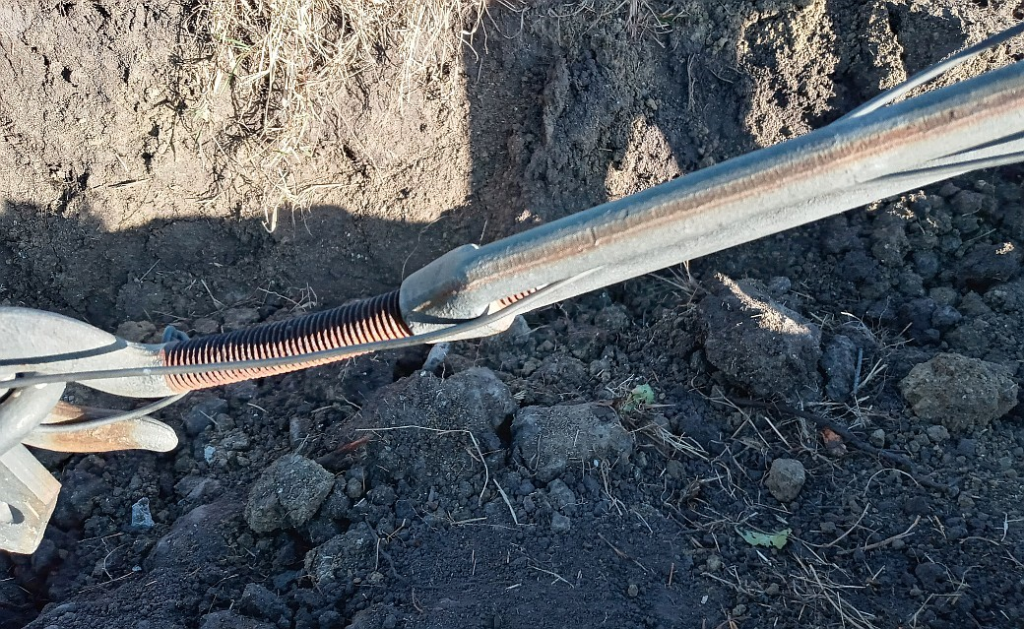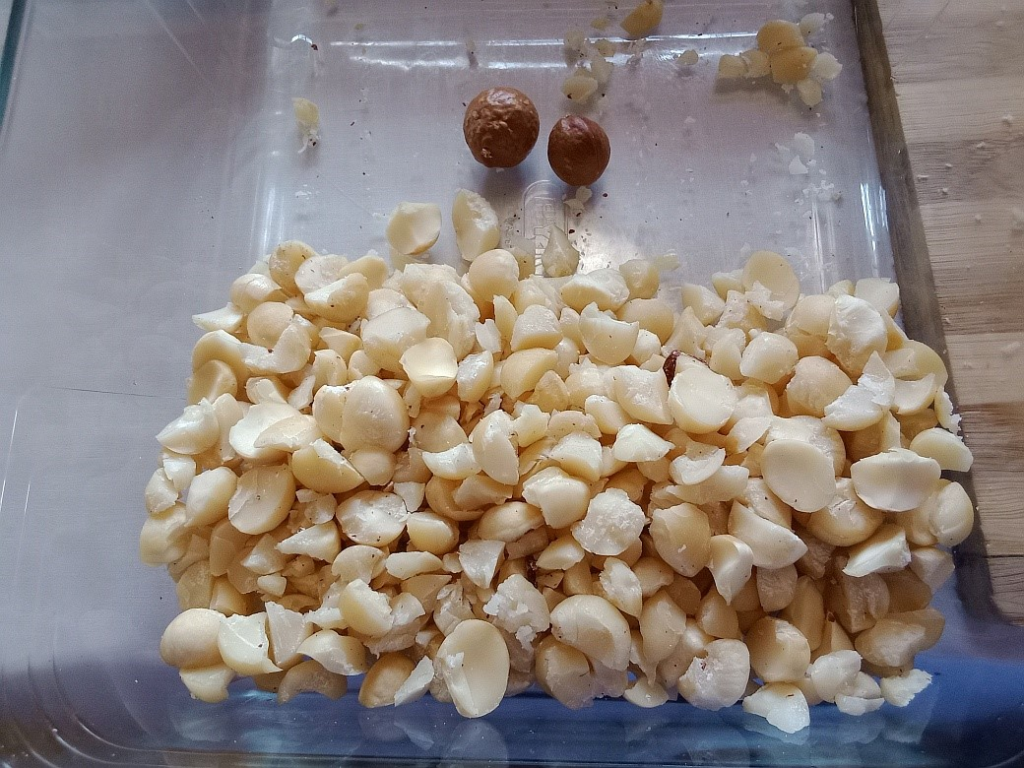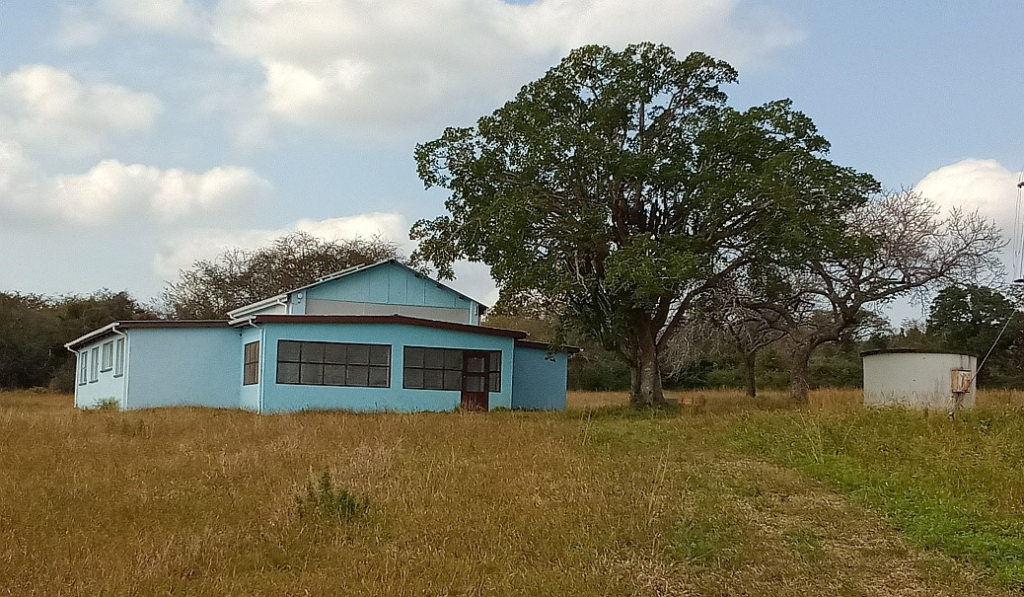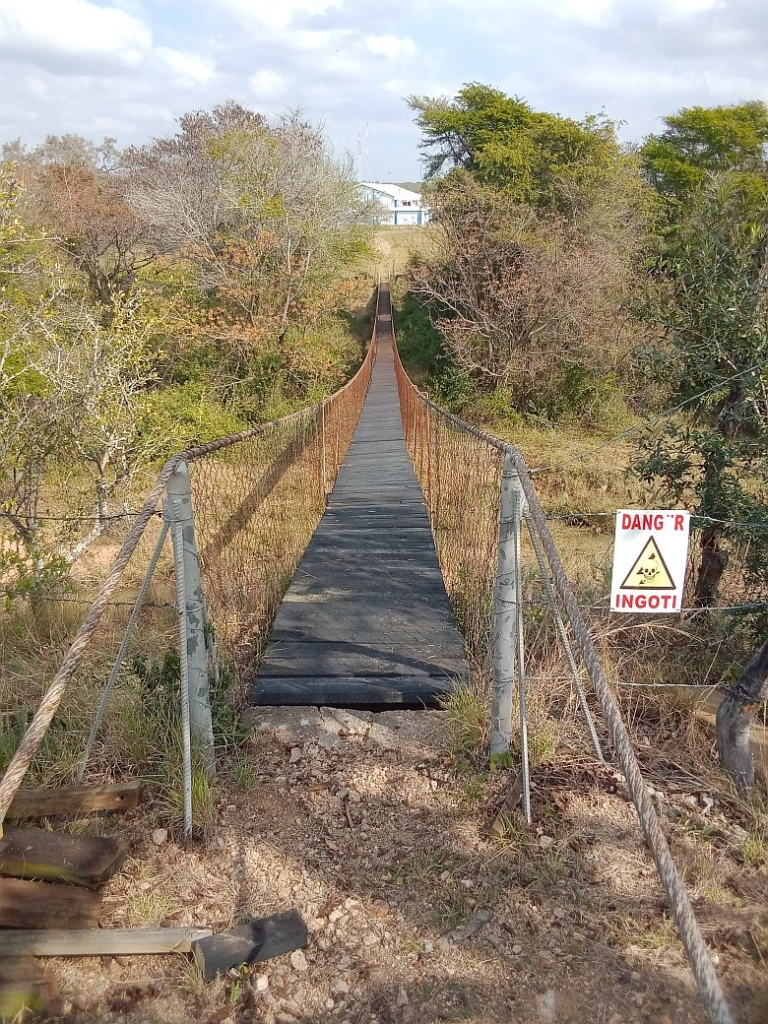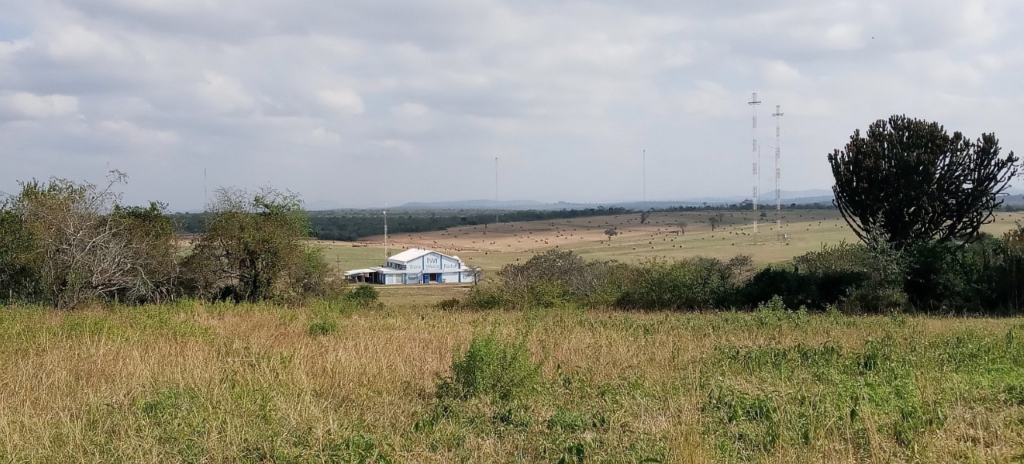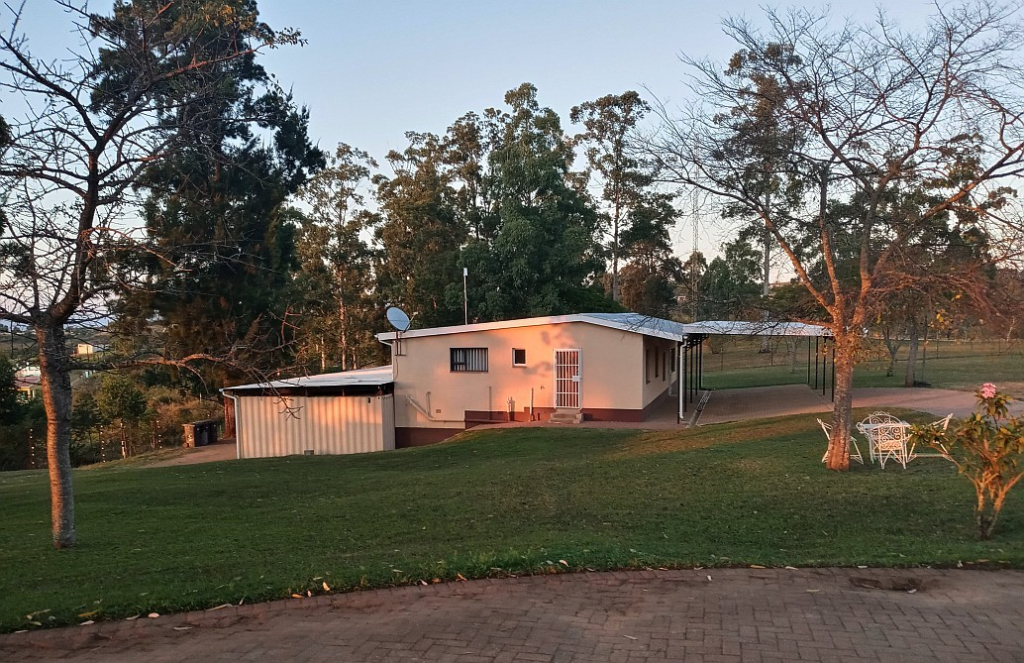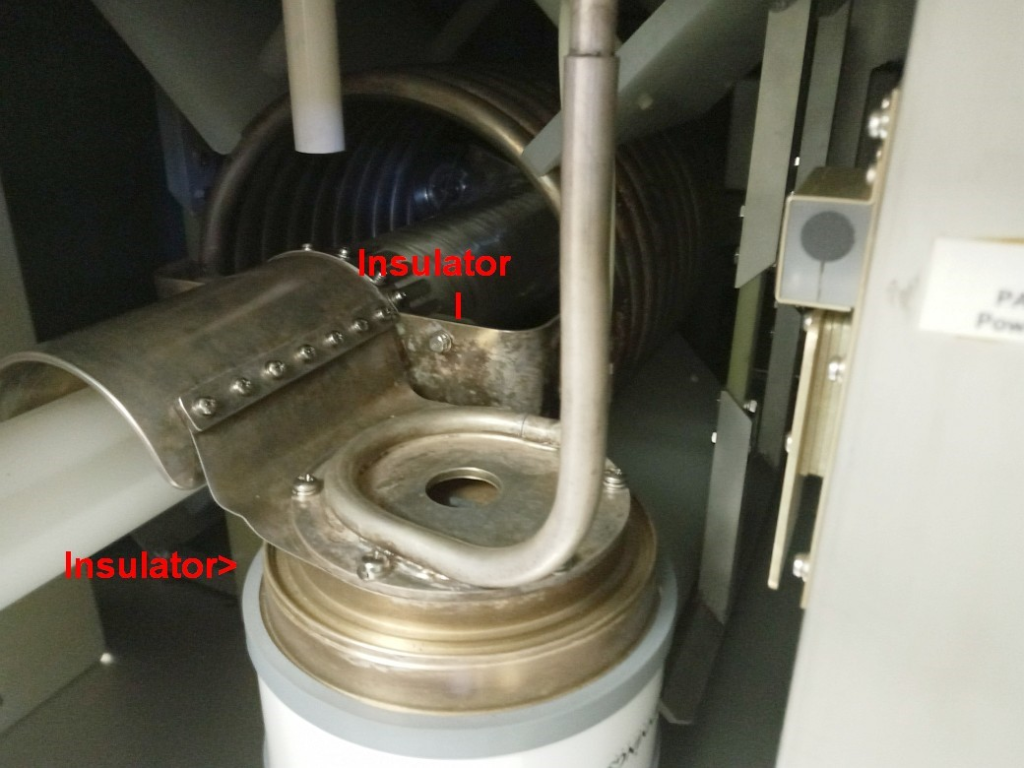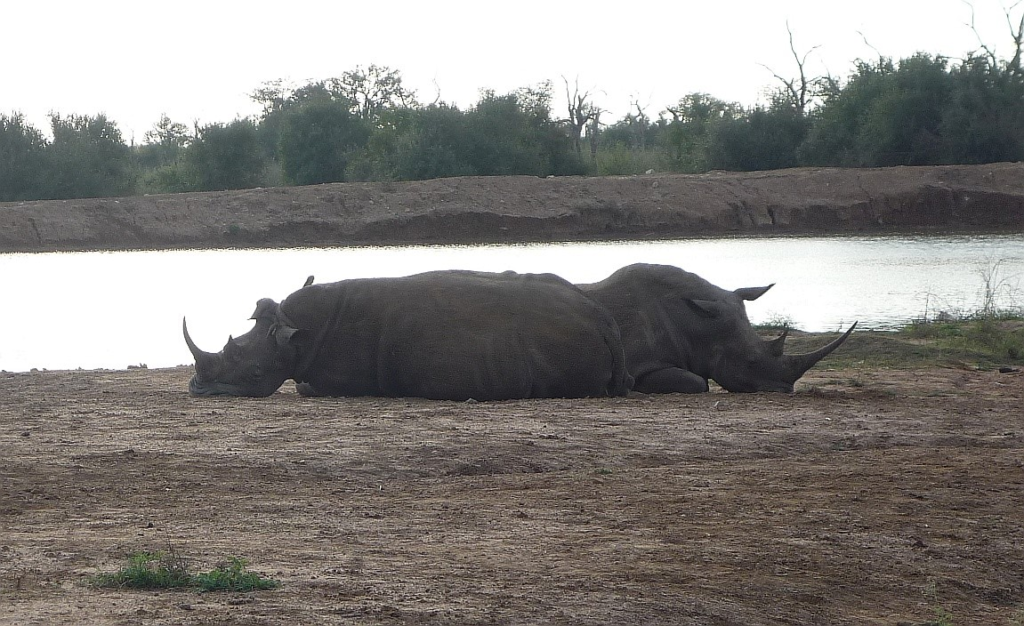Sunday 17 July – Since we arrived, Virginia has been taking care of Snowy, the cat belonging to the Kimbers, the former occupants of this house. They had made arrangements for Snowy to be transported to England where they now reside, so today he was picked up and joined two dogs from other places in Eswatini. Each animal had their own cage and were destined to fly out of Johannesburg after a six-day quarantine.
The church service today was similar to last week’s. Several minutes before his sermon, pastor was going to sing a duet with one of the church ladies. As they were getting ready to sing, the power went off. Since they had accompanying music that required electricity, the music leader just moved on to the next item in the service, which was a hymn. Thelma Pierce is still playing the accordian after 50 years and no one missed the electric keyboard and amplified worship team. In fact, it sounded quite nice! During the hymn, the power came back on and the duet took place. Pastor Deon preached on Matthew 6:32 and 34, a continuation of his sermon on not worrying. Not sure why he skipped verse 33. (I’m pretty sure I didn’t sleep through it!) Maybe it’s next week’s sermon? Today was the church’s annual general meeting, so they had a break for refreshments outside, then returned to that meeting. We decided not to stay for that.
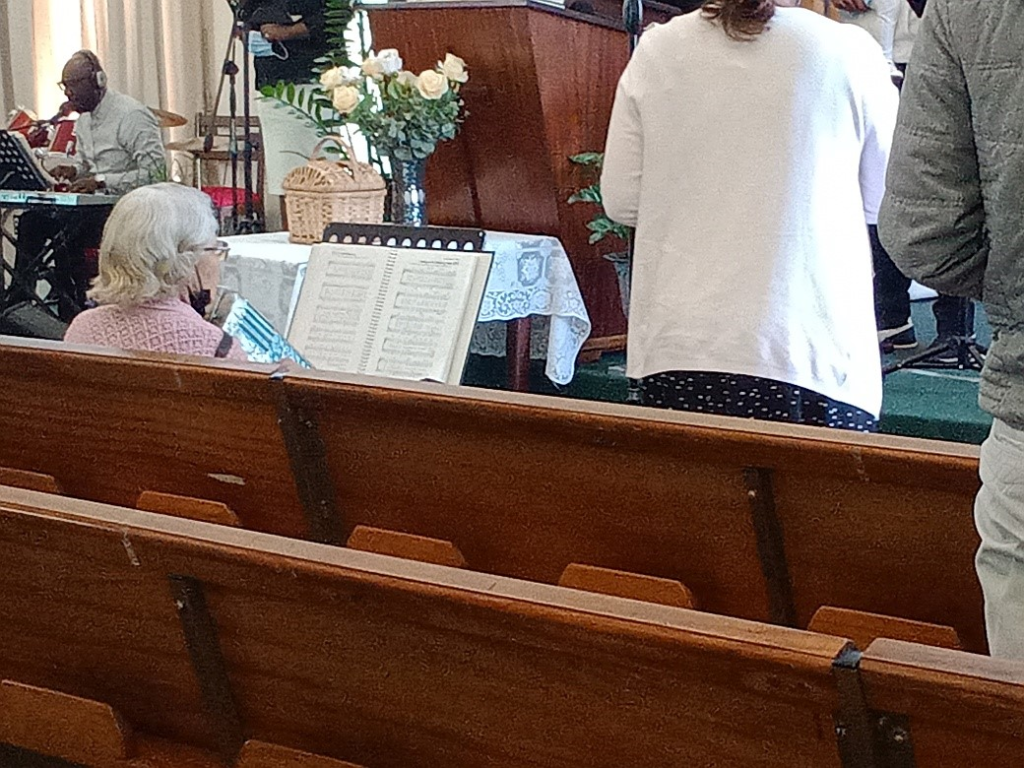
Rather than make another trip into town this week, we did some grocery shopping before heading home. Since we now knew our Visa card would work without a PIN, that was not a concern. We ended up spending about 1,300L (under $80) which included 4 fried chicken legs and a lot of chips (thick french fries) for less than $5 from the deli for our lunch. There were also chicken wings and necks available.
After lunch, we made a spontaneous trip to Swazi Candle. As we were leaving Swazi Candle, we chatted with the check-out clerk and told her we would be back later. This led to a conversation about how long we were staying and what we are doing. When she heard we were with Trans World Radio, her face lit up and she became quite excited. She listens regularly to the Voice of the Church, which was started by TWR.
In the evening, Virginia popped some popcorn (our regular Sunday evening fare) and we tried to work some on our blog. Virginia got a WhatsApp video call from Angelique, Samuel’s wife. In the middle of that call, I got a Whats App call from Michelle, Philip’s wife, on my phone and I told her how to turn on the video. We held our phones together so the two families from Michigan and Idaho could say ‘hi’ to one another and heard the exclamations of how much the children had grown – all via smart phones in Africa!
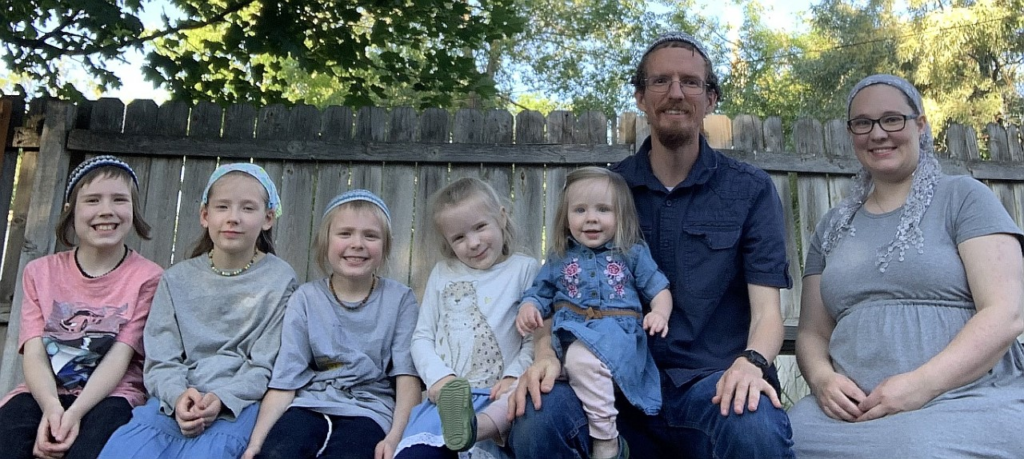
The call from Michelle was to announce the imminent arrival of their sixth child (our 18th grandchild) and to request prayer that the baby would turn, because of its breech position. Most of their children had been home births and, without insurance, the cost of a C-section and hospital stay would be a major burden. We contacted our children and other family members with this prayer request. About two hours later, Michelle called again and said the midwife had visited and the baby had turned into the right position. Praise the Lord for His answer to our prayers!!!
After this phone call, we made a last-second revision to our McGuiReport to include a sentence about the anticipated arrival of a new grandchild.
Monday18 July – First thing this morning our revised August McGuiReport was submitted to TWR for printing.
Since we are in Eswatini as visitors, our stay is limited to 30 days. To stay longer would require a work permit. With our relatively short stay, all the paperwork and cost involved to get a work permit, it is easier just to leave the country for a day or so and return for another 30 days. For our previous three trips, we went overnight to Kruger Game Park in South Africa. This time we decided to try to get reservations at Tendele Hutted Camp in Royal Natal National Park, a place where we took our boys almost every year during school breaks. Last week we made the reservations, but were having trouble making payment due to declined credit cards. Today, our reservations were finally confirmed for August 3 to 5. We decided to stay two nights because of the longer drive (about 280 miles) to get there. Would have actually liked to stay August 4 to 6 but everything was booked there, and in Kruger, for the night of August 5, due to a long holiday weekend in South Africa. This means we will have to leave on September 4 and stay a night at the TWR Africa Support Center before catching our September 5 evening flight back to the U.S.
Transmitter 1 had a couple of B+ filter arc faults last night that tripped the transmitter off for a couple of seconds each time. This has been a recurring issue for a while, but not every night. We decided to ‘hipot’ [meaning apply high potential voltage] to that section of the transmitter to see if the arcing could be duplicated. We tested that section up to 34,000 volts with no arcing. We suspect the problem may actually be in the sensing circuit rather than an actual arc. Further investigation is needed.
Since the antenna crew had removed the concrete casing of the anchor rod mention earlier, further inspection was done on how to proceed with repairs. Because the turnbuckle was slightly bent, it was decided to replace the turnbuckle and guy wrap dead-end. The latter was not damaged but must be removed to change the turnbuckle. Once removed, it is not reusable.
Tobi asked me about what the guy wire tensions should be on the two towers of the log periodic antenna that I designed and built in 1984. I easily located the drawing with those tensions that I made back then. Since that time, two similar antennas (directing signals in other directions) have been added on either side of the original one and these newer antennas have one tower in common with the original antenna. I will be doing some calculations, after getting all the needed details of the other two antennas, to determine any revised guy wire tensions. These calculation will be complicated by the fact that each antenna is at a different elevation on the towers, due to the ground slope.
When we got home this evening, we learned that Eswatini’s Prime Minister had announced that the mask mandate was being dropped effective today. The mask and vaccine mandates had been dropped for South Africa on June 22. In mid-June, the U.S. had dropped the negative COVID test required for returning U.S. citizens. We are so grateful that these changes came just in time to make our traveling less complicated.
Tuesday 19 July – No one was wearing face masks at devotions or work this morning! News sure gets around more quickly in Swaziland these days!!
We measured the guy wire to determine what size guy wrap dead-end to use. The guy wire was 3/8”, but the only dead-ends were 10mm. No one at the site knew whether these could be used on 3/8” guy wire, so I pulled up the Preformed Line Products South Africa website to find out this information. Unfortunately, the SA website did not give that information. I then pulled up the PLP U.S. website and found the range of guys sizes that a 3/8” dead-end could be used on. That range was from 10% smaller to 5% larger in diameter. The 3/8” guy diameter is 5% smaller than 10mm, therefore we concluded the 10mm dead-ends would work for the 3/8” guy wire
We went through a similar process with replacing the turnbuckle. The original was a 3/4” open body turnbuckle, which was replaced with a 20 mm closed body turnbuckle. 3/4” is approximately 19mm.

Virginia came to the site again this Tuesday with Steve and Lorraine. She brought with her a bag of macadamia nuts that Ruth Crowie gave us last Wednesday. We were told the best way to crack them was in a vise. Even then, it was took quite a bit of effort to get them to crack. We now know why they are so expensive. She spent around two hours cracking the nuts. I finally ended up helping to finish.
We have been attempting to use Skype to contact MasterCard to activate our card for overseas use. Skype not longer works on my outdated laptop, so I tried using my Kindle. When calling the number on the back of the credit card, a message asks us to enter the number of the card. Unfortunately, my Kindle does not create the tones needed. This afternoon, I decided to try the laptop that TWR lets me use at the site. This time the tones worked and after working through several menus, I finally got to speak to customer service. The representative found the notes of our travel plans that we had previously given before our departure, but said she could not activate our card based on those notes! We would have to provide a code that would be sent to the phone on record (our home phone). I said that would be impossible since I was already on Skype (the only means to check a code on our home phone, assuming they would even leave that code on an answering machine). She then transferred me to someone that was allowed to provide authentication via another method. I had to answer several multiple-choice questions similar to the ones used when requesting a credit report on-line. Found it interesting that at no time did anyone ask for our phone number on record, my birthday, our address or zipcode, or the last four digits of my SS number! Finally, after 25 minutes (fortunately there is no charge on Skype calls from overseas for toll-free numbers) our card is supposedly reactivated. We’ll see if it works when we grocery shop on Sunday after church.
We had to go through a similar process (using Skype on the site laptop) for our Visa card because our on-line access was blocked. Fortunately, this only took 12 minutes to resolve. Interestingly, on-line access to our MasterCard has not been an issue.
This evening we had Jacob Vogelpohl , a TWR intern serving for a couple months in South Africa at the TWR ASC, over for supper. He is serving in the technical department at ASC and came for the week to inventory the computer equipment used here to help plan and budget for future upgrades. Jacob is from Independence, Kentucky and studying computer science in university.
Wednesday 20 July – Tobi asked me about using the quarter-power filament feature on the HC100 (100,000-watt shortwave) transmitters. This feature is used to reduce the voltage of the filaments to conserve electricity and help extend the life of the power amplifier tube (cost around $20,000) during periods of up to 8 hours when a transmitters may be idling for the next broadcast. I let him know this feature would not be of benefit during TWR Eswatini’s current broadcast schedule. I recalled our discussion with Graham Kimber from 2016 about this topic and decided to consolidate all the information in those emails into one file for easier access should this topic come up again. Only one (the newest) of the three HC100s has that this feature installed. The older ones have the software for the feature, but not the hardware. In 2016, Graham and I found an anomaly in this feature that caused a spike in current during the transition from quarter to full power filaments that partially negated the benefits of that feature. As far as I know, that current spike has not been addressed.
While on the subject of the tube filament, there is another feature (also to prolong tube life) used in the transmitter that ramps the filament voltage up gradually at start up using an SCR controller. This SCR controller failed on the first two transmitters, so Hans Van Kampen made a step up circuit with two power resistor and two timer relays for shorting the resistors allowing the voltage to ramp up in three steps. Graham and I also studied these circuits in 2016 and discovered similar current spikes on both ramping methods. With the SCR controller, the spike was when a relay opened the SCR controller and another relay bypassed the SCR controller so that it did not have to operate continuously. With the stepped resistor method, there were current spikes each time another relay shorted one of the series resistors. We did not come to a conclusion as to what method was better or how improvements could be made. I consolidated all the information in those emails, too.
I also walked to the antenna field to try to get an idea how the guy wires were laid out for making the drawings to determine guy wire tensions. It became obvious it would take more time than was available today to gather the necessary information. I was able to approximate the direction (azimuth) to which each of the three antennas were ‘aimed’. I haven’t been able to find that information yet.
We have been trying to refill some of Virginia’s prescriptions on-line, but was unable to do so the on the laptop or Kindle Fire tablets we have with us. I had success using TWR laptop at work.
Thursday 21 July – Tobi had me check out the work he did on radio frequency filtering circuitry that he added to two printed circuit boards for controlling the switch bay, which controls switches to connect the correct antenna to the transmitter for a given broadcast. I only found one open circuit that Tobi quickly repaired.
One of the transmitter technicians found piles of white and gray plastic particles on the floor under the the PA tuning capacitor of Tx1. The only source we could find were the white plastic gears used for the potentiometer used for determining the correct tuning position of the capacitor. We found no evidence of wearing of the gears, nor where the gray particles could have originated. I asked the technician to clean up the particles and check in a day or so to see if more particles reappeared.
I spent a lot of time searching through the site technical files stored on the computer and found more helpful information, including the exact azimuth of each antenna. I also looked for a computer aided drafting (CAD) program to make some drawings of the antennas. Found TurboCAD and Design Cad, but they both required key passwords. Will check if anyone knows if they are useable next week.
Friday 22 July – Today is a holiday, the King’s Birthday (the old king Sobhuza II that is). He died in 1982 and was king most of the years we lived here. He had the longest verifiable reign of any monarch in recorded history.
Since it was a holiday, we got to sleep in past 5:30am and took it easy most of the day. I also continued working on making draft updates to our blog. After supper we were invited again to game night at the Stavropoulos home. This time we played Phase 10, but only got to about phase 4 before calling it a night around 9pm.
Saturday 23 July – Like yesterday, we slept in and took it easy most of the day with some more work on preparing drafts for our blog. Final posting will occur on the site laptop, because it is not possible to edit, add photos, nor post from my old laptop. In the evening, we built a cozy fire in the fireplace. There is plenty of wood piled in a fenced in area next to the yard where we are staying, so we may be making more use of the fireplace on these cool evenings.


